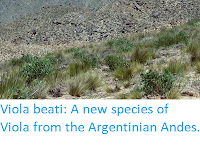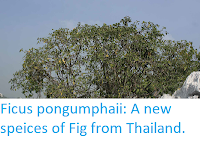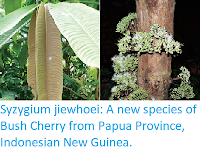Begonias, Begonia spp., are perennial flowering plants related to
Gourds, found in tropical and subtropical forests around the world, and
popular as houseplants. They are typically ground-dwelling understory
Plants, though some species are epiphytes (live on other Plants, usually
in the canopy of trees). Begonias are monoecious, with both male and
female flowers occurring on a single plant, and may be upright-stemmed,
rhizomatous or tuberous. The genus is one of the largest known genera of Flowering Plants, with over 1800 described species. These are found throughout the tropics, with two major centres of biodivesity, in South America and Southeast Asia. The Philippines falls within the Southeast Asian biodiversity hotspot, with about 120 described species.
In a paper published in the journal Phytotaxa on 26 June 2019, Shih-hui Liu and Yu-Hsin Tseng of the Research Museum and Herbarium at Academia Sinica, Diaiti Zure, also of the Research Museum and Herbarium and of the Biodiversity Program at Academia Sinica, and of the Department of Life Science at the National Taiwan Normal University, Rosario Rivera Rubite of the Department of Biology at the University of the Philippines Manila, Teodora Balangcod of the Department of Biology at the University of the Philippines Baguio, and Ching-I Peng and Kuo-Fang Chung, also of the Research Museum and Herbarium at Academia Sinica, describe a new species of Begonia from Luzon Island in the Philippines.
The new species is named Begonia balangcodiae, in honour of Teodora Balangcod, for her hospitality to the other members of the group during their stay at the University of the Philippines Baguio. The species is an erect herb reaching about a metre in height, with asymmetric, lance-shaped leaves with white spots, and white or greenish white flowers. The species was found growing on slopes in a mossy forest in Benguet Province.
Begonia balangcodiae. (A) Habitat and habit; (B) stem and petiole; (C) pistillate flowers; (D) staminate flower; (E) staminate flower and staminate flower bud; (F) inflorescence, and pistillate flower buds; (G) ovary and bracts; (H) habit. Scale bar is 5 mm. Liu et al. (2019).
See also...
Follow Sciency Thoughts on Facebook.







